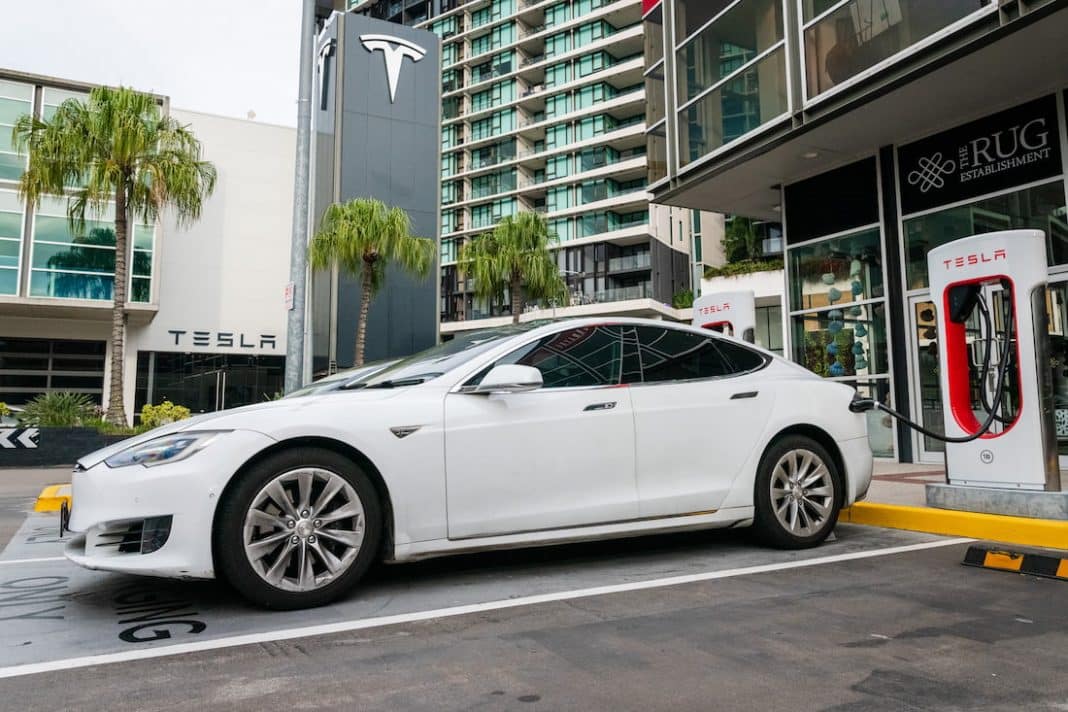A single tax cut was all it took to trigger an electric vehicle race in Australia.
The change, cutting fringe benefits tax from the next-generation cars, has sent inquiries soaring by 60 per cent for some firms, with one leasing executive calling the reaction “crazy”.
But industry experts say booming interest also highlighted an underlying problem in the market – a lack of supply – they say cannot be fixed with price cuts, but with new policies.
If the issue is not addressed soon, they warn, Australia will spend years catching up to progress abroad, including an electric boom from close neighbours.
The cost cut, passed on November 28, removed fringe benefits tax from electric and other low-emission vehicles priced under $84,916.
Almost 30 electric vehicles qualify for the discount, including cars from Tesla, BYD, MG, Hyundai and Kia.
Under the scheme, employees who salary sacrifice vehicle purchases through their employer could save more than $10,000 on an $80,000 electric vehicle.
The offer was enough to convince Robin Allardice, director of accounting firm Bentleys Tasmania, to extend electric vehicle packages to his entire staff.
“As soon as the government put a policy in place, I said ‘why don’t we do that?’. We put it together, talked about it to the staff, and told them they could access it,” he said.
“It’s going to cost them about 40 per cent less than it would have done if they had to buy it from after-tax money.”
Mr Allardice said the scheme could help the company retain staff and attract business, and he planned to use it himself at the end of the year.
The firm is in good company, with unprecedented interest reported by salary packaging firms following the tax cut.
Eclipx Group chief executive Damien Berrell said the announcement had an instant impact on electric vehicle inquiries with the fleet management firm.
“We saw a 60 per cent increase,” he said.
“It’s crazy at the moment, the interest the novated (lease) team are receiving for electric vehicles.”
The tax cut saw a similar reaction at Orix, where novated leasing national manager Colleen Deane said queries rose 40 per cent as a direct result of the announcement.
“There has been an increase in (EV) inquiries since mid-2022 but it has increased dramatically since the (discount) bill was passed,” she said.
But leasing agents noted rising order numbers were also having an unwanted effect: extending delivery times by months.
“We expect delivery delays to carry on through 2023,” Ms Deane said.
Delays of three to six months for cars were considered “good” following COVID-inspired shortages, she said, but were not achievable for all cars.
Mr Berrell said the most popular models being ordered under new leasing packages would take most of the year to reach buyers.
“The government’s done a good job with this fringe benefits tax relief in terms of stimulating demand. The challenge they need to address now is the supply,” Mr Berrell said.
“If you do choose an EV, there’s significant delays in those vehicles turning up because of supply constraints. It’s anywhere between three months for the BYD brand to nine months or even longer for some other EV brands.”
Electric Vehicle Council policy head Jake Whitehead said the problem was particularly acute in Australia due to outdated policies.
The nation is one of a handful of wealthy countries without a fuel-efficiency standard, along with Russia, Indonesia and Turkey.
These standards set an average fuel efficiency target for a car maker’s fleet, ensuring they balance the import of high-emitting vehicles with electric or hybrid models, and encourage them to deliver more eco-friendly cars.
Penalties are put in place for exceeding emissions targets.
Mr Whitehead said introducing a standard would not only increase the number of electric vehicles in Australia, but would raise competition and put downward pressure on prices.
“We always look to Europe for examples and the fuel-efficiency standard they have in place is effectively the equivalent of giving a $15,000 subsidy for an EV,” he said.
“We’re not talking about putting a $15,000 subsidy on the table to compete with that. We think it’s more efficient to put the right policy settings in place so car makers around the world are encourage to supply more fuel-efficient and electric battery models to our market.”
An example closer to home could be found in New Zealand, Mr Whitehead said, where the government announced a fuel-efficiency standard in early 2022 and introduced it in December.
The policy, along with rebates of up to $8000, led electric vehicle registrations in NZ to reach more than 20 per cent that month and 15 per cent of new light vehicle sales for the year.
By comparison, Australian electric vehicle sales reached 3.1 per cent.
Griffith University lecturer Anna Mortimore said Australian policy makers could learn from NZ’s example and, in addition, a fuel efficiency standard had opportunities to make a big impact with small tweaks.
“The instant asset write-off is available for (petrol) vehicles as well as battery electric vehicles. Why not just make it available for battery electric vehicles?” she asked.
“There are a lot of little things like that that could bring down the cost of the electric vehicle for businesses and make them more attractive.”
Policies on tax changes, vehicle-charging networks and standards are expected to be outlined in the federal government’s response to the National Electric Vehicle Strategy consultation, which closed in late October.
Mr Whitehead said most eyes would not be on new financial incentives but policies that gave Australians access to more eco-friendly cars.
“This year we will no doubt see electric vehicles that have a three in front of the sticker price and that is a huge change from where we were five years ago where electric vehicles were a six-figure proposition,” he said.
“The key question is will Australia get those vehicles and it’s very likely we won’t or we won’t get as many if we don’t have a fuel efficiency standard.”



